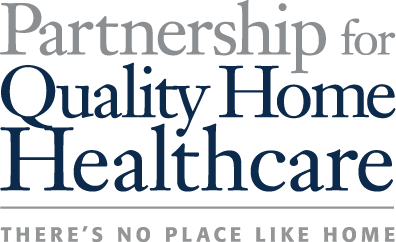April 15, 2013
Home Health Firms, With Data Showing Fraud Isolated, Push Copay Alternatives
Posted in: News
Inside Health Policy
The vast majority of fraud in the home care industry is still isolated in a handful of counties, a new industry study finds, and a coalition that includes home health firms and AARP says lawmakers could glean billions more in savings by ending Medicare fraud instead of making seniors pay more for services and cutting provider pay. The president’s budget includes across-the-board cuts to home health pay and calls for home health copays, which together total $3.75 billion in Medicare savings over 10 years, and the industry group Partnership for Quality Home Healthcare says its fraud fighting proposals would save in the neighborhood of $15 billion over a decade.
The Partnership is a member of the Fight Fraud First!, a coalition that also includes AARP and patient advocate groups. That coalition sent a letter to the White House on April 10 arguing against the kinds of measures that are included in the president’s budget proposal. “Rather than turning to Medicare cuts or higher premiums or copayments that unfairly burden seniors, we urge the federal government to achieve savings by implementing policy solutions that stop waste, fraud, and abuse before it starts,” the letter states. Fight Fraud First is lobbying against Medicare fraud in general and not on home health policies specifically.
The Partnership updated its analysis of where fraud is occurring and, as before, found that counties in a handful of states are responsible for roughly 90 percent of the fraud. Although the analysis is similar to past research, the results are even more striking now that CMS has instituted industry’s previous proposal to cap Medicare outlier claims at 10 percent of providers’ total reimbursement, an industry analysis shows. Congress included the industry-proposed outlier cap in the Affordable Care Act and the Partnership says that cap has rid the system of one fraudulent activity. With the gaming of outlier pay no longer muddying the analysis of fraud, it’s easier to identify the two areas of abuse that remain.
Among the findings are that 18 of the 254 counties in Texas account for more suspected home health fraud and abuse than any single state nationwide: A quarter of all home health providers in the U.S. are in Texas, and 80 percent of the Texas home health spending occurs in those 18 counties. Episodes among Texas beneficiaries cost 50 percent more on average than the rest of the country. Miami-Dade County in Florida also looks like a fraud hot spot. It has one home health agency for every 552 Medicare beneficiaries, compared with one per 18,638 beneficiaries nationwide. Providers in Miami-Dade spent an average of $3,327 per enrollee, and providers in the rest of the country spent an average of $498 per enrollee.
The Partnership is proposing two fraud-fighting measures in place of copays and market basket cuts. One would cap payment at a per-provider average of 2.7 therapy episodes per beneficiary for non-rural providers and at 3.3 episodes per beneficiary for rural providers. The Partnership last estimated this measure would save Medicare $13.8 billion over 10 years.
The second industry proposal would incorporate a minimum annual low utilization payment adjustment (LUPA) rate of 5 percent for all episode payments, which the group last estimated would save $1.4 billion. However, industry is now calling those measures “safeguards” instead of “caps” to avoid leading policymakers to believe that beneficiaries would be discharged once they receive the maximum number of episodes. Unlike a therapy cap, these are aggregate annual averages on a per-provider basis. — John Wilkerson (jwilkerson@iwpnews.com)
View the original article here.
